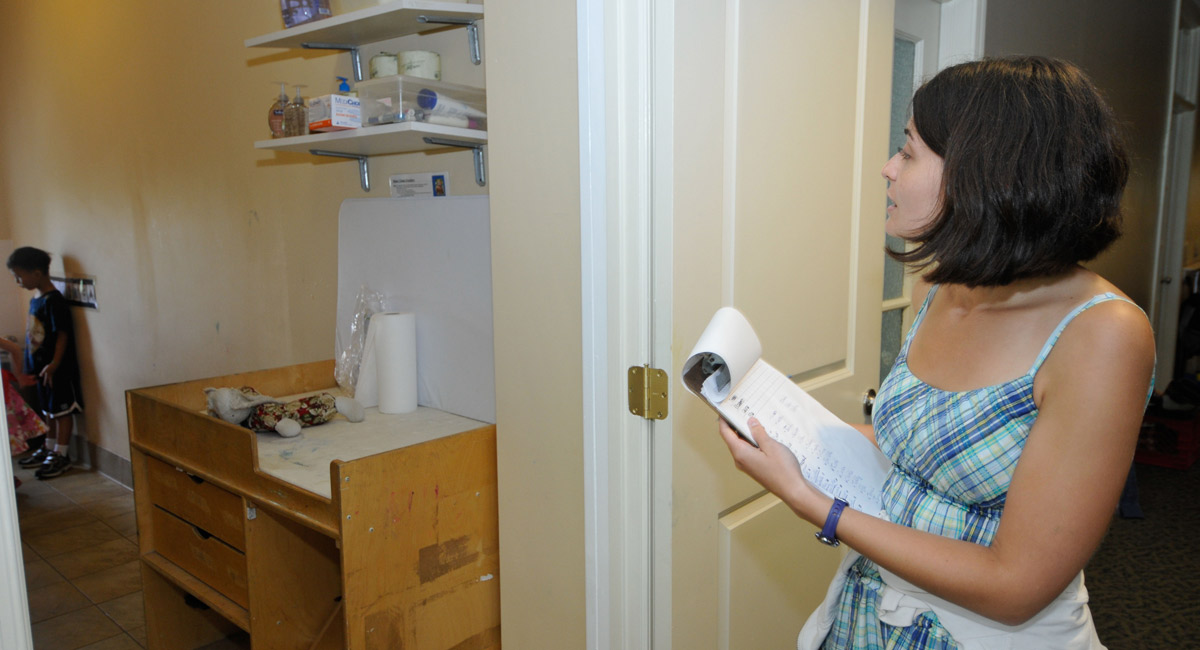
Early in the COVID-19 crisis, Child Care Aware® of America (CCAoA) developed a decision flow diagram to aid decision making surrounding temporarily closing child care programs due to health and safety concerns. CCAoA’s flow diagram was adapted from a school-age program decision aid developed by the Centers for Disease Control and Prevention.
Now we are several months into COVID-19 and child care programs that have been able to remain open face continued uncertainty. A critical unknown is if child care programs contribute to community COVID-19 transmission. Presently, researchers at Yale University are conducting a study to determine the implications of child care programs that remain open or closed during COVID-19.
While we eagerly await study results from Yale University, CCAoA conducted a survey of Child Care Resource and Referral (CCR&R) agencies across the country. One purpose of the CCR&R survey was to identify the most pressing concerns that CCR&R professionals are hearing from child care providers. The top 5 concerns relayed to CCR&Rs by child care providers included whether to close or remain open during the pandemic. This is very understandable given the seemingly unpredictable future waves of the virus and the tenuous ability of child care program owners and administrators to weather the crisis operationally and financially.
CCAoA is devoted to being a source of trusted information and resources for CCR&Rs and child care professionals. Explore our Coronavirus Hub for CCR&Rs and Child Care Providers and consider the following related to making the determination to close or keep child care programs open during COVID-19.
Community context
Community spread – consult with local and state public health departments regarding the current and projected rate of COVID-19 spread in your community. You may find links to state health department websites and/or telephone numbers by clicking on CCAoA’s state-by-state map, selecting your state of interest and then browsing the ‘Health and Social Services’ tab. Given the rate of COVID-19 spread in your area, consider what precautions should be taken to protect the health of children enrolled, their families and program staff?
Family and community input – connect with families with young children and community members to get a sense of what they are thinking and feeling regarding keeping child care open. What options will families have if center or family home-based licensed child care programs close and access is limited? What impact will local employers experience if reduced or no formal child care options are available to their employees?
Child care program staff – consider the comfort level of child care professionals, especially those in direct day-to-day contact with enrolled children, when making or guiding determinations about whether to close programs. Do early educators fear that their health and the health of their household members are at risk if they continue to work in a child care program? Given the potential risk to their own health, is there extra compensation available for front-line child care professionals through community resources or state programs? Are there options for health insurance for early educators who are uninsured but who continue to work in child care program environments?
Operational considerations
Consult guidance from local and state health departments, child care licensing and child care health consultants. Monitor for executive orders related to child care that are issued by your state governor’s office. Some governors have issued orders to close all child care or have required waiver programs to provide emergency child care for essential workers. As community spread ebbs and flows, some states and localities are finding it necessary to revert temporarily to an earlier phase of re-opening. Sign up to receive newsletters and alerts from relevant entities in your area and monitor their social media account updates to receive state and community alerts that impact child care programs.
To remain open, child care programs will need to continue to procure an adequate quantity of supplies to operate safely – such as cleaning and disinfection products, no-contact thermometers for child and staff health monitoring, and personal protective equipment (PPE) like masks, gloves and smocks. Determine what reliable sourcing pipelines are available to purchase supplies locally and online. Some large suppliers, Amazon Business for example, have designated early education customer advisors who can offer specialized assistance to child care programs. Some early education suppliers such as Kaplan have enhanced their inventory and resources specific to COVID-19. CCR&Rs and licensing agencies may have information about programs that provide relief funds for child care providers to ease the cost of purchasing supplies and materials.
If child care program administrators haven’t done so recently, revisit contract language and update language as needed. Families and child care providers need clarity around their commitments to one another, including expectations for tuition payment if a temporary program closure becomes necessary. Visit CCAoA’s Grab, Adapt and Go – COVID-19 Resources for Child Care Programs blog post for useful operations-focused tools.
Financial factors
A necessary reality of child care programs is that they simply cannot stay open during COVID-19 if finances are in short supply, even if they want to. This is a particularly difficult realization for child care professionals because of their close relationships with children and families enrolled in their program and their knowledge of the important role they fill as early educators.
There are many things to balance when reviewing whether it is financially feasible for a program to continue child care services. Revisiting program budgets to gain an understanding of the cost of care per child with COVID-19 costs incorporated is a good first step. In a budget, figuring out a way to bear the cost of purchasing cleaning, sanitation, health monitoring and PPE supplies is one consideration. Programs must also consider their own program enrollment and census trend. Are there, and will there continue to be, enough children enrolled to make ends meet? In addition to traditional revenue streams such as tuition and subsidy payments, what other sources of revenue may have become available to keep programs open and what grants have emerged to sustain early educators through COVID-19?
Programs that can remain open through the coronavirus pandemic, may also consider leveraging this unique crisis to think outside of the box for actions that might help to promote their business’ long-term viability. For example, child care programs may be able to increase their long-term financial sustainability by implementing a child care management system (CCMS). CCMS’s automate processes like attendance tracking, employee time sheets and payroll processing, tuition collection and subsidy payments. With a CCMS in place, child care business owners and directors spend less time on administrative tasks and more time on relationship-focused efforts such as connecting more intentionally with children, families and staff. Listen to a recorded webinar on child care business automation solutions and how, if embraced, they can streamline operations and strengthen child care programs.
Connect with our team
CCAoA’s Emergency Child Care and Technical Assistance Center technical assistance team is ready to engage with you. This new Technical Assistance Center serves CCR&Rs and other system-level leaders, providers and families. You may submit a technical assistance request online anytime and a CCAoA team member will connect with you.
Stay tuned
In addition to all the resources noted above, we have additional resources on the horizon for you. Coming soon to CCAoA’s website:
- A Help Center (self-serve technical assistance portal) that will be updated regularly with information and resources related to the questions most frequently asked by CCR&Rs, providers and families.
- A series of webinars and briefs on business automation and ways to improve efficiencies and sharpen financial management strategies.
- Resources and tools to support social-emotional health and trauma informed care.
- New decision-making tools for child care providers and families.
![ECCTAC-Logo[1]-1](https://info.childcareaware.org/hs-fs/hubfs/Rich%20Text%20Pasting/unknown-1595431381223.png?width=299&name=unknown-1595431381223.png)





